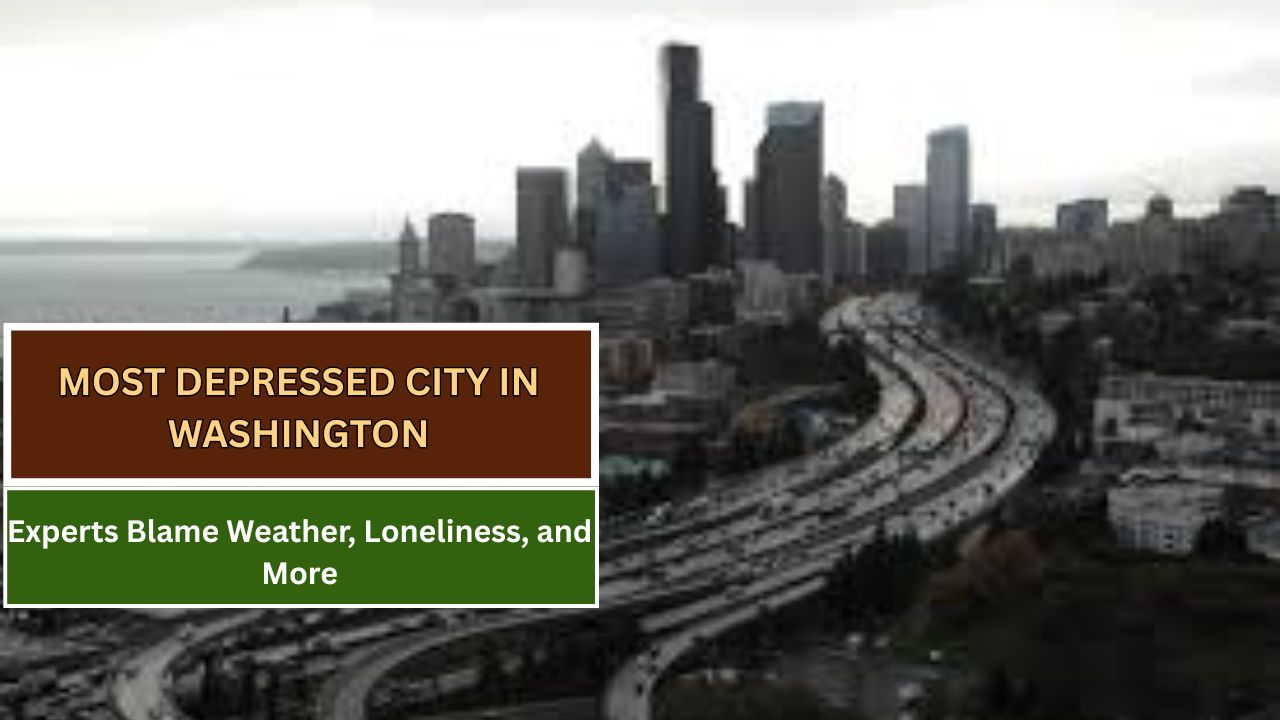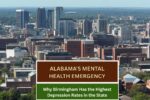Seattle, often celebrated for its natural beauty and tech-driven economy, is facing a serious and sobering public health challenge. According to a 2023 report by the U.S. Census Bureau’s Household Pulse Survey, the Seattle metropolitan area recorded the highest rate of self-reported depression among major U.S. cities, with approximately 45% of adults indicating they felt “down, depressed, or hopeless” during the survey period. That’s about 1.4 million people out of over 3 million residents.
This alarming trend sheds light on the broader mental health struggles affecting the Pacific Northwest and offers a glimpse into the compounding factors that make Seattle a difficult place to thrive emotionally, particularly during the darker months.
Why Is Depression So Common in Seattle?
Several factors appear to be driving the high prevalence of depression in Seattle. The leading contributors include seasonal affective disorder (SAD), social isolation, and economic stress, according to mental health experts and survey data.
1. Seasonal Affective Disorder (SAD)
Seattle’s climate plays a critical role in its mental health landscape. Known for its gray skies and persistent rainfall, the city sees significantly fewer hours of daylight in the winter—shrinking from over 13 hours in September to just 8.5 hours by the winter solstice.
According to the National Institute of Mental Health (NIMH), this dramatic loss of sunlight is a key trigger for seasonal affective disorder, a type of depression that affects around 5% of the U.S. population annually. Seattle ranked ninth among U.S. cities for SAD prevalence in a recent FOX 13 Seattle report.
To combat this, many health professionals recommend the use of light therapy lamps and cognitive behavioral therapy during the winter months.
2. Loneliness and Social Isolation
Seattle is also struggling with a loneliness epidemic. A 2023 Axios report revealed that 43.2% of Washington residents feel lonely at least occasionally, a rate higher than the national average.
The high percentage of single-person households in Seattle—nearly one-third—contributes significantly to these feelings of isolation. Many residents also cite the so-called “Seattle Freeze”, a cultural term that describes the city’s perceived social aloofness, as a barrier to forming meaningful connections.
According to the Centers for Disease Control and Prevention (CDC), social isolation is linked to a 50% increased risk of dementia, along with heightened risks for depression, anxiety, and suicide.
3. Economic and Demographic Pressures
Depression levels vary significantly by age, income, and relationship status. The Household Pulse Survey found that:
- 64% of people under 30 in Seattle reported depressive symptoms.
- 69% of those with household incomes below $35,000 experienced depression.
- Unmarried individuals (61%) reported higher depression rates compared to married counterparts (36%).
- Women (49%) were more likely to report symptoms than men (42%).
These statistics suggest that financial insecurity, youth vulnerability, and lack of emotional support are powerful drivers of mental health challenges.
Addressing Seattle’s Mental Health Crisis
In response to these concerns, local and state agencies are investing in mental health infrastructure. The Washington State Department of Health (DOH) offers various mental health resources including access to crisis hotlines, therapy providers, and support groups.
Seattle’s King County Behavioral Health and Recovery Division also provides mental health services tailored to underserved populations. Visit kingcounty.gov to learn more.
Public awareness campaigns, community events, and educational programs are also underway to fight stigma and encourage residents to seek help when needed.
Where to Get Help
If you or someone you know is struggling with depression in Seattle, consider contacting:
- National Suicide Prevention Lifeline: 988
- Washington Warm Line (peer support): 1-877-500-WARM
- Crisis Connections (Seattle-based): www.crisisconnections.org
Free and affordable mental health services can also be accessed through platforms like NAMI Seattle, which offers support groups, classes, and referrals.
The Way Forward
Seattle’s challenges are significant, but not insurmountable. By acknowledging the mental health crisis and taking collective action—from government initiatives to community engagement—the city can work toward becoming not only livable, but emotionally sustainable.
In the meantime, it’s essential for residents to stay connected, seek help when needed, and remember that seasonal lows are often temporary—and treatable.
This article has been carefully fact-checked by our editorial team to ensure accuracy and eliminate any misleading information. We are committed to maintaining the highest standards of integrity in our content.

Outside of work, he enjoys playing chess, following cricket, and writing short stories. His commitment to integrity and in-depth analysis strengthens OTE News’ mission of providing trustworthy journalism.




